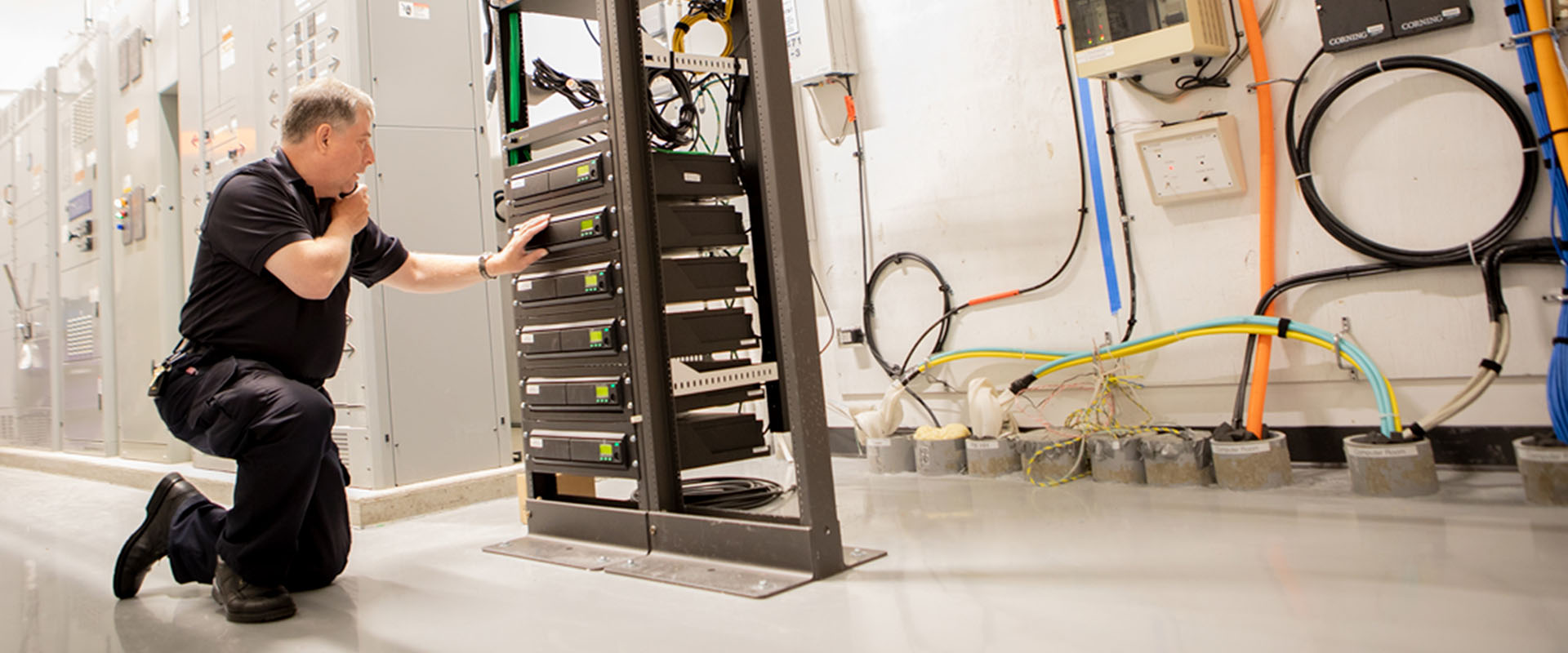Imagine that you and two friends are standing on a football field. You’re on one goal line, and your first friend is on the 20-yard line. Your second friend is on the other goal line. You ask your second friend, on the other goal line, if he can hear you. However, you ask only loud enough for your first friend to hear you. Your second friend, on the opposite field goal line, can’t hear you. Your first friend on the 20-yard line turns around and shouts out in a powerful, loud voice, “He asked if you could hear him!”
This is an illustration of how two-way radio repeaters work! Read on as we learn more about the importance of two-way radio repeaters in a radio system.
Where Do Two-Way Radio Repeaters Fit Into a Communications System?
What is a Radio Repeater?
How Does a Radio Repeater Work?
The basic concept of a radio repeater involves two frequencies: one for receiving and one for transmitting. When a signal is sent from a mobile radio or portable radio, it reaches the repeater, which captures the signal on one frequency. The repeater then retransmits the signal on another frequency at a higher power, allowing it to reach a wider area.
Most repeaters operate in either the VHF or UHF bands, with UHF being more popular for its ability to penetrate buildings and other obstructions. UHF repeaters are commonly used in environments where communication must pass through walls or in dense urban areas. A UHF analog repeater, for example, can significantly improve communication in such environments, ensuring clear signals despite potential obstacles.
Analog vs. Digital Repeaters
There are two main types of repeaters: analog radio repeaters and digital radio repeaters. Analog repeaters work with traditional analog radios, which modulate continuous waveforms to transmit voice or data. These are still widely used and offer a simple, reliable form of communication.
On the other hand, digital repeaters work with digital radios, like Motorola MOTOTRBO systems. Digital radios use discrete signals, converting voice or data into binary code before transmission. This method provides clearer audio, better range, and enhanced features like text messaging or GPS tracking. Digital repeaters are increasingly popular as more organizations transition to digital radio systems for enhanced performance and features.
Full Duplex and Single Antenna Systems
A radio repeater operates in what is known as full duplex mode. Because of a repeater part called the duplexer it can both transmit and receive signals simultaneously, unlike traditional radios that operate in simplex, where communication happens in only one direction at a time, on the same frequency. This is crucial for smooth communication, especially in fast-paced environments like public safety or emergency response.
Many repeaters use a single antenna to both receive and transmit signals. In these setups, a device called a duplexer is used to allow the antenna to handle both the incoming and outgoing signals without interference. This setup is ideal for compact repeater stations without room for another antenna, as it reduces the need for multiple antennas.
Range and Coverage
The main advantage of using a radio repeater is the increased range and coverage area it provides. Without a repeater, the range of a typical two-way radio is limited by factors such as terrain, obstructions, and the power of the radio transmitter. However, with a repeater in place, the radio signals can travel much farther, cover more considerable distances, and overcome physical barriers like hills or buildings.
In some cases, organizations use dual-band repeaters, which operate on both UHF and VHF frequencies. This allows for greater flexibility in communication, especially in a location where different teams may be using different frequency bands. Dual-band repeaters are ideal for industries like transportation, where both mobile radios and marine radios may be in use at the same time.
Mobile Radio Systems and Base Stations
Repeaters are often installed at a fixed base station, typically located at a high point like a hill or tall building, to maximize the range of the system. The base station is basically the hub of the repeater system, ensuring clear communication between different users, even if they are miles apart.
In addition to fixed base stations, mobile stations can also use repeaters. These are typically installed in vehicles, allowing mobile teams to stay connected over large distances. Mobile stations can benefit from the enhanced range provided by a repeater, ensuring reliable communication in remote or challenging locations.
Marine and Portable Radios
Radio repeaters are also crucial in marine environments. Marine radios rely on repeaters to extend their range, ensuring that vessels at sea can communicate with each other and with shore-based stations. This is essential for safety and coordination in marine operations.
Similarly, portable radios—commonly used by industries like construction, public safety, and event management—can benefit from the enhanced range and reliability offered by a repeater system. Portable radios operating in areas with poor signal reception or in large facilities can stay connected through the repeater, ensuring clear communication even in challenging environments.
Repeaters Play a Vital Role in Communications Systems
Trust SJM to Provide You Best-In-Class Radio Solutions
To succeed in today’s fast-moving world, you need communication tools that keep pace and keep you connected. Two-way radios give you instant and reliable access to the right people and the right information. SJM Industrial Radio is committed to providing the highest quality, most reliable Motorola two-way radio solutions for any industry, in any environment, at the best price. Personalized customer service and satisfaction are paramount. SJM will work with you to develop custom communications solutions that meet the specific needs of your business.
Call SJM Industrial Radios TODAY!

